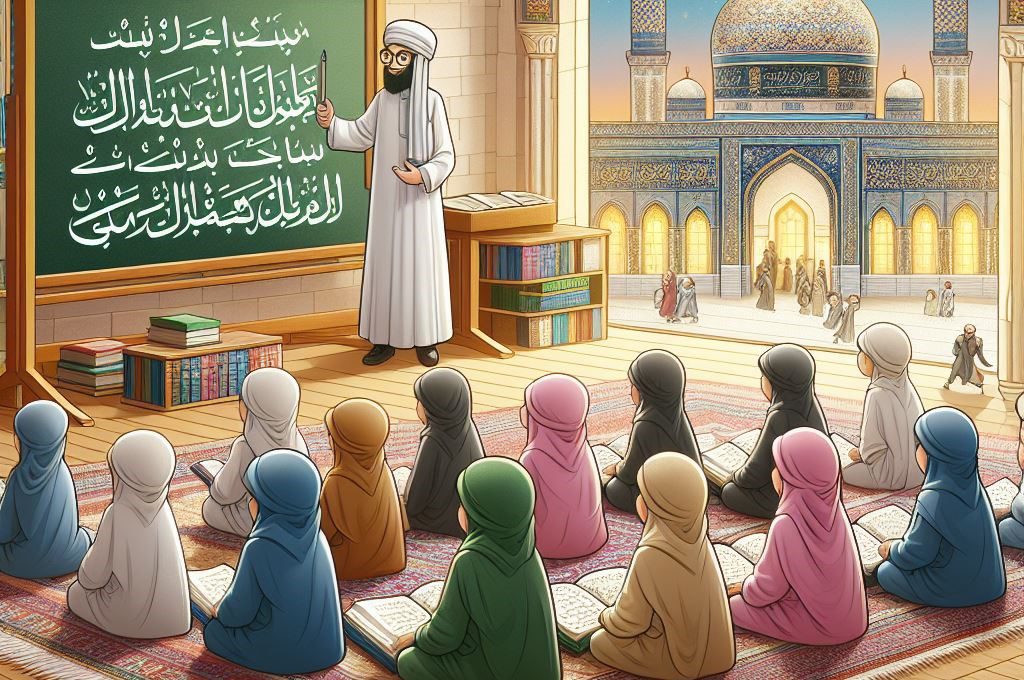The Significance of Arabic Noorani Qaida in Schools
As Muslim parents, teaching the Arabic Noorani Qaida and Quranic education to our children is not merely a cultural practice; it’s a spiritual legacy. For centuries, Islamic education has been reinforced by divine instructions that lay the foundation of moral and spiritual development. In this article, we delve into the traditional and enduring significance of Noorani Qaida in Islamic schools and how it plays a pivotal role in laying the foundation for Quranic learning.
Understanding the Arabic Noorani Qaida
Noorani Qaida assists as a basic tool in teaching Arabic and Quranic text. It forms the basis of learning for beginners stepping into the treasure of Islamic education. The Qaida, originating from the Arabic word “قَاعِدَة” which means foundation, exactly outline its purpose – to provide a solid base upon which to build the skills of reciting the Quran.
Due to the deep historical significance of Arabic Noorani Qaida book, it has been considered a part of traditional Islamic education for generations, being a starting point for millions in the journey to learning the Quran.
Despite changes in educational structures and the advent of technological advancements, Arabic Noorani Qaida’s significance has not been ignored. Whether printed in ancient text or presented through modern online platforms, its core remains consistent. Noorani Qaida Arabic guides learners through the Arabic alphabet, pronunciation rules, vowels and basic word formation in the context of Quranic verses.
Teaching Arabic and Quranic Recitation
The journey through Arabic alphabet Noorani Qaida is a structured pathway that ensures students gradually acquire the skills needed for proficient recitation. The learning process employs a step-by-step approach, starting with alphabets recognition and practicing their sounds, moving on to the formation of words, and finally, to reading complete verses of Quran. It is a process that requires patience and consistent practice. Each step and each lesson of Noorani Qaida is interrelated with next. So, the mastery of one is essential before progressing to the next.
Pronunciation and phonetics are given extensive focus. Students are taught to enunciate each letter with precision. Sometimes they face difficulty in articulating the sound of a specific word, because of a particular sound may not exist in their native language. Arabic Noorani Qaida introduces Tajweed rules – the principles governing proper Quranic recitation. These rules enhance the beauty and precision of Quran recitation also provide beginners the ability to convey the meanings and spiritual essence of the Quranic verses.
Building a Strong Foundation
The early phase of a child’s educational development is crucial, and Arabic Noorani Qaida is designed to be a part of this formative period. By engaging children at the age of three or four in the learning process, the Qaida method capitalizes on their adaptability in acquiring new language skills. It promote a deep connection of children with the Quran from a very young age and helps mold them into proficient readers by the time they are ready to study the Quran in its entirety.
The benefits of starting with the Noorani Qaida are manifold. It not only enables children to learn the basics of reading Arabic and Quranic text but also opens the ways of Quran recitation with fluency and proper pronunciation. Moreover, it inculcates discipline and dedication in students, as the diligence required in mastering the Qaida’s lessons echoes the reverence and commitment integral to the practice of Islam.
Integration into Islamic Schools
Arabic Noorani Qaida is an integral part of the curricula in Islamic schools worldwide. Educators employ various teaching techniques for Qaida; to make the learning experience more engaging and effective; visual aids, and technology to compete the traditional approaches. The Qaida’s role is not limited to a single subject; its benefits spill over into other areas of Islamic studies, serving as a scaffold for language learning and comprehension.
Islamic schools teach Noorani Qaida to meet the needs of their diverse or multicultural student populations. Providing a common ground for learning, Noorani Qaida become a comprehensive tool that bridges the gap among the students having different language backgrounds.
Role of Parents in Teaching Qaida
The traditional role of Noorani Qaida does not end within the boundaries of the classroom. Muslim parents are essential partners in their children’s educational journey, especially in reinforcing the lessons taught through the Qaida. Home serves as a retreat where children and parents can revise the lessons, and Modern Noorani Qaida serves as a handy resource for structured learning at home.
Empowering parents through workshops and resources enhances the support system for young learners. Noorani Qaida Arabic and English pdf, digital apps, and recorded videos bring the Qaida’s experience more easy for children as well as parents and tutors.
Conclusion
In sum, the traditional role of Arabic Noorani Qaida in Islamic schools highlights its enduring significance as a foundational learning tool. It has been instrumental in teaching the basics of the Arabic language and the correct pronunciation of Quranic verses, ensuring that students across generations can connect deeply with their religious texts.
As we look to the future of education within Islamic communities, integrating the Noorani Qaida into modern teaching methods presents an opportunity to blend tradition with innovation. This approach not only honors our heritage but also enhances the learning experience for students in today’s digital age.
Consider how this timeless resource can be adapted and utilized to continue fostering a strong foundation in Quranic education for the next generation.





